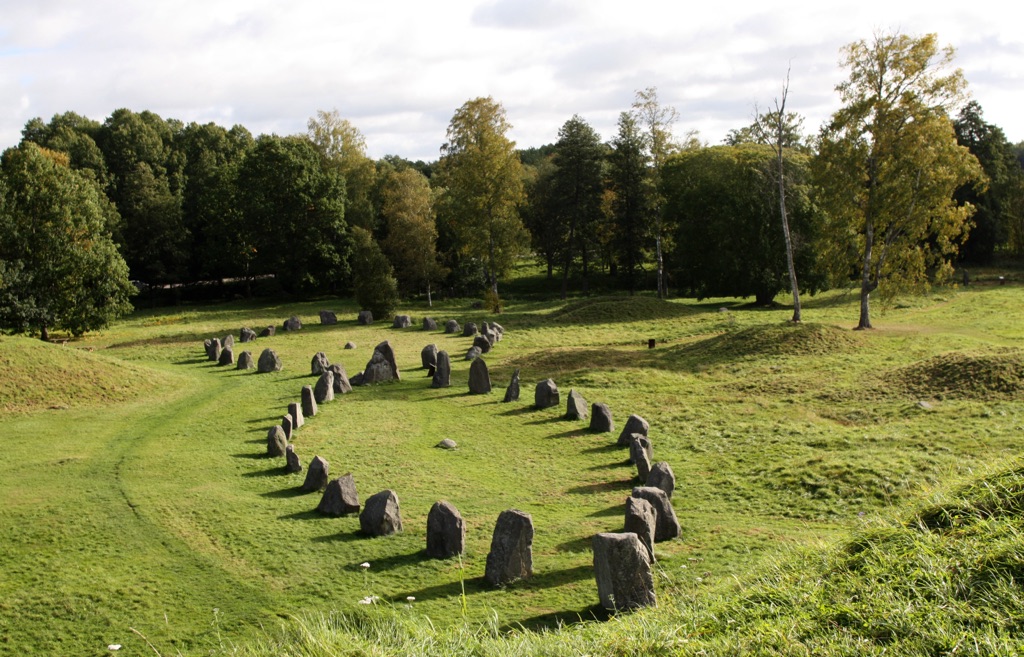The Badelunda Stone Ship is a remarkable ancient structure located in Västmanland, Sweden. It’s a stone ship setting, a type of megalithic monument found in the Nordic countries. These structures are shaped like ships and made from large standing stones. The Badelunda Stone Ship is one of the largest in Sweden and is situated near the town of Västerås, on the ridge of Badelundaåsen. It dates back to the Nordic Iron Age or the Viking Age, serving as a grave field and a ceremonial site. The site is a testament to the maritime culture that was central to the Norse people and their view of the afterlife.
Get your dose of History via Email
Historical Background of Badelunda Stone Ship
The Badelunda Stone Ship was discovered in the 19th century, capturing the interest of historians and archaeologists. It was first mentioned in written records in 1816 by antiquarian Johan Gustaf Liljegren. The site was built by the Norse people, who were known for their seafaring skills and rich maritime culture. The stone ship likely dates back to the Viking Age, between the 8th and 11th centuries AD. It’s believed that the site was used for burials of important individuals, with the ship setting symbolizing a vessel that would carry the deceased to the afterlife.
Over the years, the site has attracted attention for its size and well-preserved condition. No significant historical events are recorded at the site itself, but it stands as a silent witness to the beliefs and practices of its creators. The Badelunda Stone Ship has not been the scene of any known battles or political events. However, it is an important cultural landmark that offers insights into the Viking Age and the spiritual life of the Norse people.
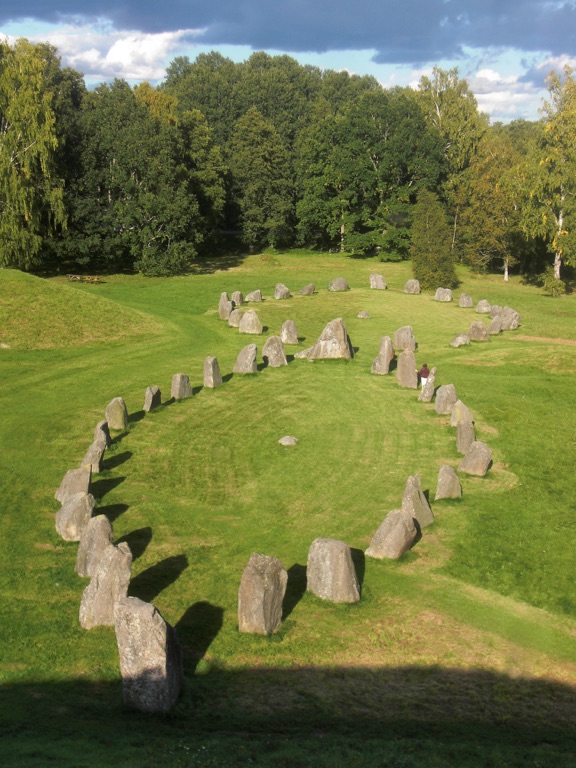
There is no clear record of the site being inhabited later by other cultures. Its primary function appears to have remained as a grave field throughout history. The site’s preservation allows for ongoing study and interpretation, contributing to our understanding of the Viking Age and its cultural practices.
The Badelunda Stone Ship has not been the center of any historically significant events in the modern era. However, it is a significant archaeological site that provides a connection to Sweden’s ancient past. The site is a popular tourist attraction and is protected as a part of Sweden’s cultural heritage, ensuring its preservation for future generations.
The builders of the Badelunda Stone Ship were part of the Norse culture, which was prevalent across Scandinavia during the Viking Age. The Norse people were known for their elaborate burial customs, which often included ship burials for the elite. The stone ship at Badelunda is a monumental example of this tradition, reflecting the importance of the sea in Norse society and their beliefs about the journey to the afterlife.
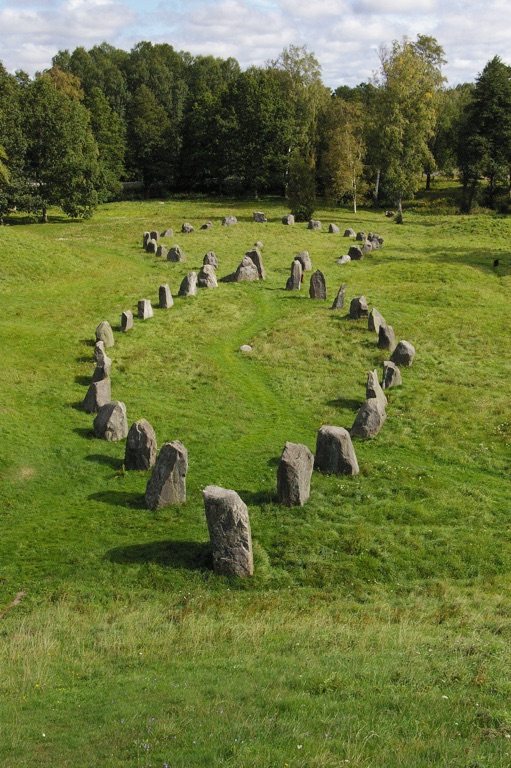
About Badelunda Stone Ship
The Badelunda Stone Ship is a megalithic structure that resembles the outline of a ship. It is made up of large standing stones, known as menhirs, placed on the edge to form the shape of a vessel. The stones are thought to represent the hull of a ship, with the entire structure symbolizing a vessel that would transport the deceased to the afterlife. The ship setting is approximately 25 meters long and 5 meters wide at its widest point.
The construction of the Badelunda Stone Ship would have required significant effort. The large stones had to be transported from nearby areas and erected in a precise arrangement. The methods used to move and place these heavy stones remain a topic of interest for researchers. The stones are placed in a careful pattern, with the larger ones at the “stern” and “bow” of the ship, which is typical of stone ship settings.
The architectural highlights of the Badelunda Stone Ship include its size and the precision with which the stones are arranged. The site is well-preserved, allowing visitors to get a clear sense of its original layout. The stones vary in size, with some standing taller than others, contributing to the visual impact of the structure.
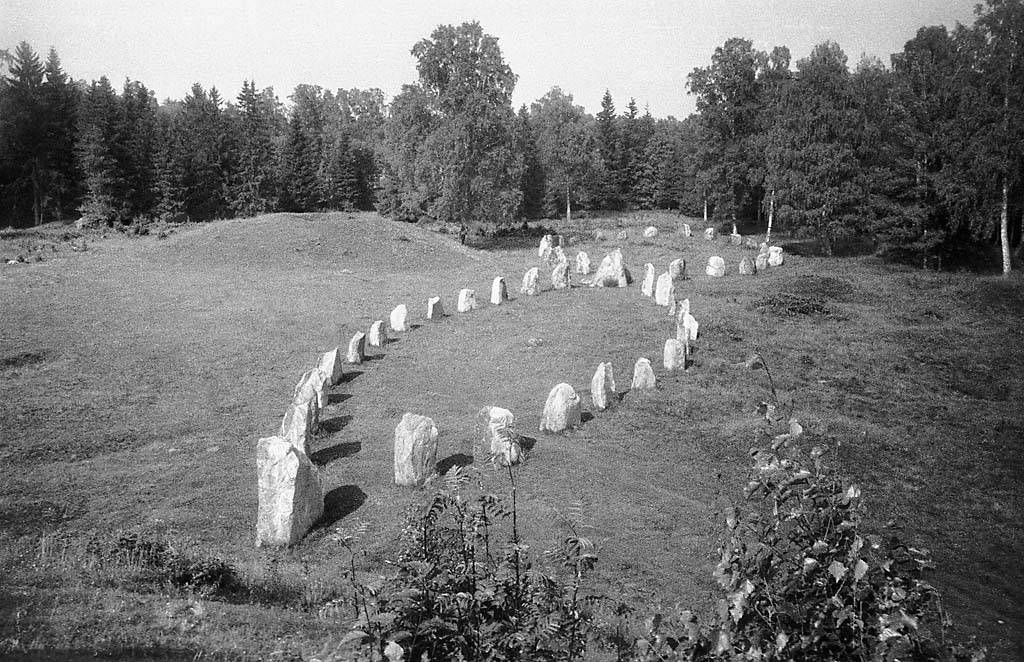
The building materials for the Badelunda Stone Ship were sourced locally. The region is rich in natural stone, which would have been readily available to the Norse people who built the monument. The choice of stone as a building material also reflects the permanence and significance that the Norse attributed to their burial sites.
The Badelunda Stone Ship does not feature any inscriptions or carvings that would provide direct information about its builders or the individuals buried there. The simplicity of the structure is in line with other stone ship settings found in Scandinavia, which often lack elaborate decorations or inscriptions.
Theories and Interpretations
Several theories exist about the use and significance of the Badelunda Stone Ship. The most widely accepted theory is that it served as a grave field, where prominent individuals were buried. The ship setting is thought to represent a vessel that would carry the deceased to the afterlife, a belief that was common in Norse mythology.
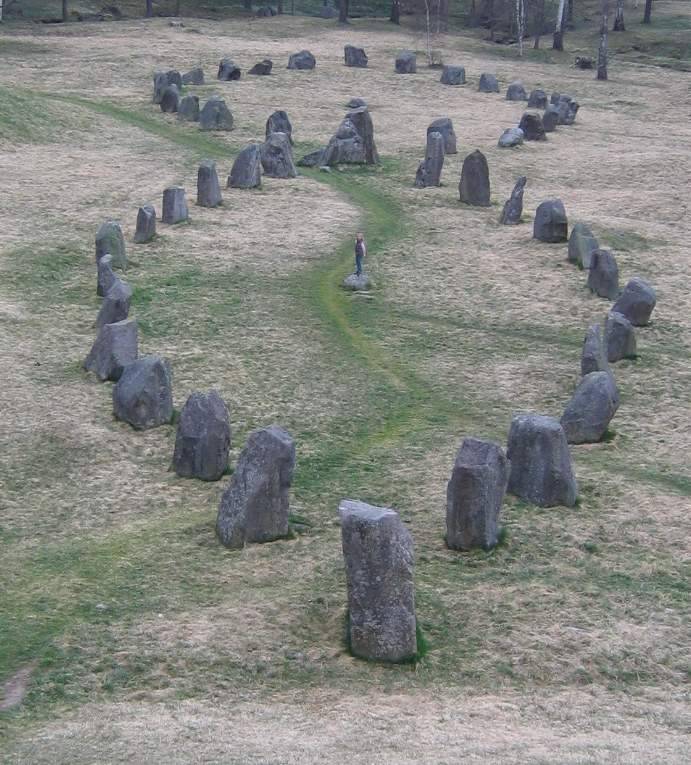
There are mysteries surrounding the specific rituals that might have taken place at the site. While it is clear that the stone ship had a funerary function, the exact nature of the ceremonies and the identity of those buried there are unknown. Archaeologists have not found any remains or artifacts that would provide definitive answers.
Interpretations of the site have to be matched to historical records and Norse mythology. The stone ship settings are often associated with the Norse god Odin and the belief in Valhalla, a hall where warriors slain in battle were believed to reside. However, without direct evidence, these connections remain speculative.
Dating of the Badelunda Stone Ship has been carried out using various methods. Radiocarbon dating of organic material found near the site suggests that it was in use during the Viking Age. The style of the stone ship and its size also support this dating.
Despite the lack of written records from the time of its construction, the Badelunda Stone Ship is an important cultural and historical site. It provides valuable insights into the beliefs and practices of the Norse people. The site continues to be a focus of research and interpretation, contributing to our understanding of the Viking Age.
At a glance
- Country: Sweden
- Civilization: Viking (Norse)
- Age: Viking Age, approximately 8th to 11th century AD
Conclusion and Sources
- Wikipedia: https://en.wikipedia.org/wiki/Stone_ship

